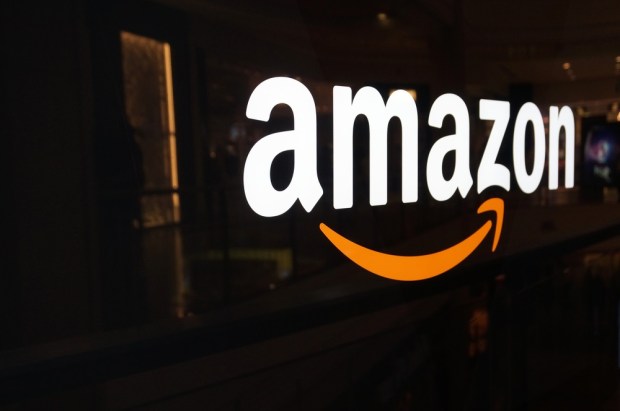Where Amazon Treads, Stocks Tremble

Beware the Amazon Effect, where competitors’ stocks slide on the merest hint that Amazon wants a piece of their pie. Unless you’re a short seller — or in stocks for the long haul — heady declines may be hard to stomach.
Amazon has clawed up the slippery stock market slope to become one of the biggest companies, as measured by market cap, in the world.
With a new all-time high reached last week of more than $804 a share, Amazon’s shares have doubled in less than a year and a half, and that brings the eCommerce behemoth to stand beside illustrious tech peers and investor darlings. The firm is ranked fourth in the world by market cap, behind only Apple, Alphabet and Microsoft.
Growth, as ever, is the name of the game for Amazon. It is what cheers The Street and is what has brought the stock to these lofty levels. But this is no mere case of a rising tide lifting all boats (though that does indeed happen on The Street, as the dot-com bubble of earlier in the millennium showed). Amazon’s ride has been based on sanguine views over its competitive positioning and its ability to make money wherever it sets its sights. Could that be a zero-sum game for other stocks — and the companies attached to them?
Investors seem to think so.
Call it the “Amazon Effect.” When Amazon fires a shot across the bow of other companies pursuing niches in other markets, stocks tremble. Just a rumor can suffice to send shares plummeting, without any concrete affirmation from Amazon management.
In just the latest examples of the Amazon Effect, earlier this month, the firm said that it would be launching a prints business, bringing Amazon up against Shutterfly. Shutterfly’s stock plunged double-digit percentages (off 12 percent intraday) on the sudden debut of Amazon Prints, which lets users print photos and photo books.
There’s also the ability to create calendars and stationary. And as has been Amazon’s hallmark, price is what matters. Amazon’s strategy is to use the printing service as a way to boost usage of, and sign up new users to, its cloud storage service, and so, the pricing of the printing service seems secondary. Sites such as TechCrunch noted that Amazon’s pricing for a 4×5 print stood at $0.09 a copy, significantly under the $0.15 charged by Shutterfly. What’s at stake here? Possibly Shutterfly’s margins, which is, of course, why that firm’s stock sank. Price wars can be brutal. Price wars with Amazon can be worse than brutal.
As the eCommerce giant looks to load new features onto its Prime service beyond two-day shipping, with perks such as streaming media, price is simply one arrow in the quiver, albeit a sharp one.
How about harnessing the power of portals? Last month, Amazon made waves across the auto industry when it said it would look to the car portal business, Enter Amazon Vehicles, which the company defines as a “car research destination and automotive community,” where car enthusiasts and the automotively curious can gather to swap reviews, photos and basically kibitz. The buzz surrounding the portal is that Amazon is laying the groundwork for inching into, or perhaps jumping into, the car buying business. Perhaps no wonder, then, that TrueCar shares crashed on the news, as that company’s business model hinges on matching car buyers and car dealers that pledge to honor a “no haggle” price. TrueCar shares screeched downwards by 14 percent on the news.
Also, last month, music services were on the “to do” list for Amazon, which, of course, brings the firm into Apple’s sphere, and at $10, according to press reports. Apple shares have not reacted all that much, since, well, we are talking about Apple here, with the scale and drive — similar to Amazon’s — to do just fine in hardware and software. But in another flank attack, Amazon has rattled sabers against Google Home and Apple’s Siri, as had been reported in June. The key competitive advantage, according to some industry watchers, is that Amazon will offer ad-free music streaming, in contrast to the other services.
The read across here is that discounting will carry the day, and streaming media will help differentiate the firm away from its “traditional niche” of delivery systems. In a head-to-head against Netflix earlier this year, Amazon said its Prime Video would become a standalone video service, which took Netflix shares down a peg — actually more than a peg, with a 13 percent decline.
There’s even an effect on management teams at Amazon rivals. Recode posited this week that Target Chief Digital Officer Jason Goldberger’s position had been eliminated and that he had left the firm — and that his duties had been split between two other executives — amid thorny competition from Amazon.
What does this all mean for short-term trading? A lot, if you’re a short seller, seeking profits from sliding stocks. The mere whiff of competition from the 800-pound gorilla in eCommerce is enough to send skittish holders to the exits. Those investors with a longer-term view may find buying opportunities among the panic, depending on how cast iron their stomach linings may be. The fact remains that the announcement of Amazonian entrance into a new market does not guarantee success; none of these firms will go down without a fight. As Amazon evolves, so too will competitors — “Amazon Effect” or not.
